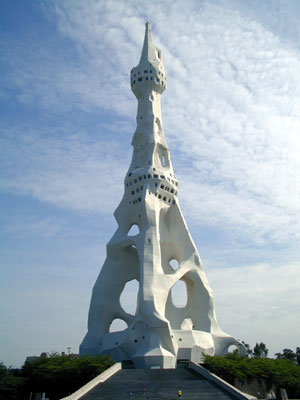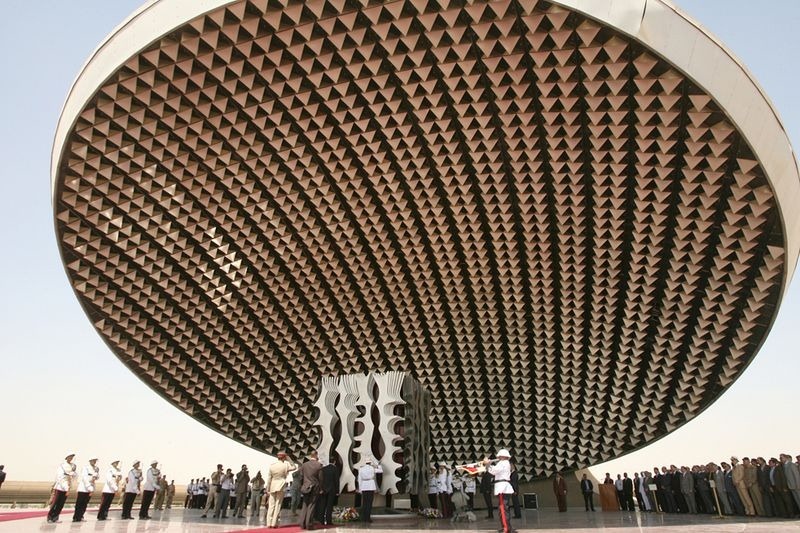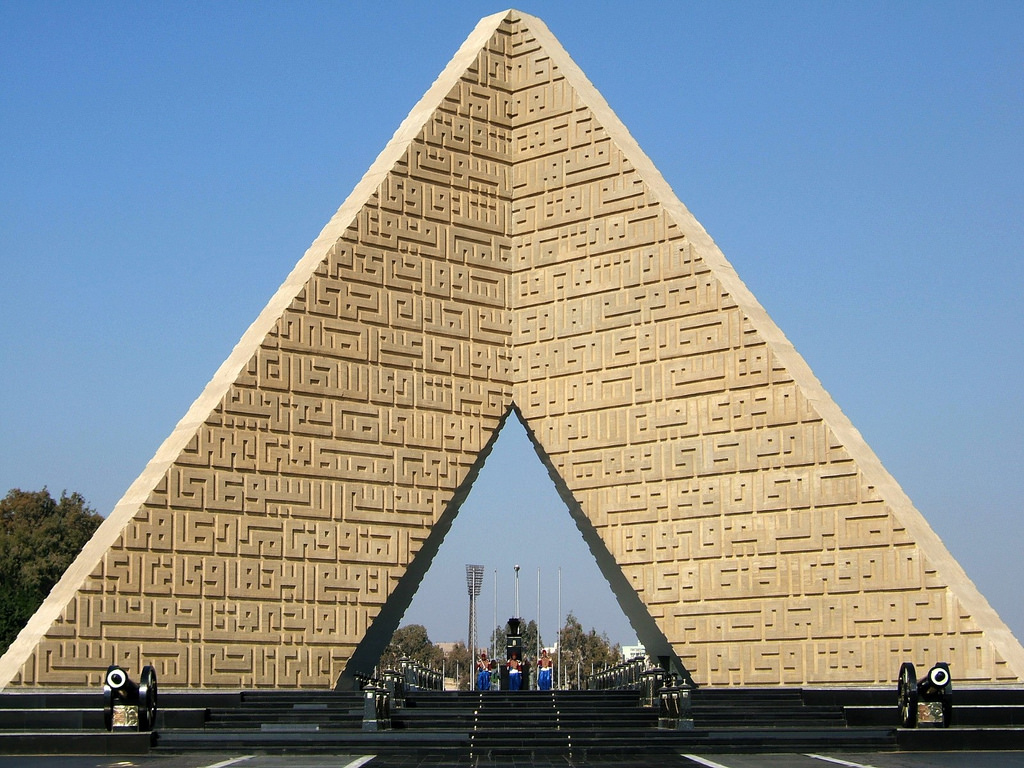Unknown Soldier
Soviet communism and Italian fascism were, in the words of the French historian Francois Furet, "the children of World War I." Without the war, Lenin would have remained the exiled leader of a marginal movement, and Mussolini a prominent spokesman for the Italian Socialist Party. But the war not only created the conditions that made the Communist and Fascist regimes possible, it also shaped their character. The Communist and Fascist ideal was a militarized society, organized for war, highly mobilized and tightly controlled, at once democratic and authoritarian, participatory and disciplined.Violence was centrally important for fascism and communism, not simply as a means of acquiring power but as a transformative instrument, essential to forging a new social and political order. And so both movements brought the war home, domesticated its habits and sensibility, institutionalized its brutality and aggression. "For us," said one Italian Fascist, "the war has never come to an end. We simply replaced external enemies with internal ones." The army, Trotsky proclaimed, "is that school where the party can instill moral hardness, self-sacrifice and discipline." "War," Mussolini wrote in 1932, "brings to its highest tension all human energy and puts the stamp of nobility upon the peoples who have the courage to meet it." The regenerative power of combat, violence, and war, which before 1914 had been celebrated by a few theorists, was now accepted by men in charge of major European states.
Those millions of Europeans who were attracted by fascism or communism (and sometimes by one and then the other) were convinced that prewar values and assumptions were irretrievably lost. The ardent admirers of Lenin and Mussolini no longer believed in the possibility of a liberal order, in a world of commerce and calculation, of peaceful protests and parliamentary debates. Nor could they any longer accept the restraints of traditional strategy and statecraft, the prewar belief in military means justified by political ends, in clear distinctions between international rivalries and domestic alignments. Those on the extreme left and right agreed that a new order was needed and that harsh, even brutal measures were required to achieve it.
Across the lives of those who survived the war stretched the long shadow of the millions who did not. Of the 70 million men mobilized during the war, 9.45 million were killed. Proportionally, the smaller, weaker participants suffered most: Serbia lost more than a third of its army, Turkey and Romania a quarter of theirs, and Bulgaria more than a fifth. Among the major states, France had the highest percentage of its armed forces killed (16.8), followed by Germany (15.4), Austria-Hungary (12.2), Britain (11.8), and Russia (11.5). In every army, some units had unusually high casualty rates. In Adolf Hitler's regiment, the 16th Bavarian Reserve, 3,000 out of a total of 3,600 men were killed or wounded in less than a month when they went up against experienced British regulars in the fall of 1914; within a year, only a handful of the original regiment remained on active duty. Scotland, which traditionally provided recruits for the British army's elite regiments, had a fatality rate of 25 percent, more than twice the average for all of Britain.
In none of the major powers did prominent families try to protect their sons from service at the front. Marshal Foch lost a son and a son-in-law within a few days of each other in 1914; a month later, the eldest son of Chancellor Bethmann Hollweg was mortally wounded on the eastern front; Herbert Asquith, the British prime minister, never recovered from the death of his beloved son, Raymond, in 1916. It has been estimated that up to one third of the families of British peers lost at least one member. But while death did not discriminate by wealth or rank or education, it did greatly prefer the young. The British dead included almost 9 percent of the males under forty-five. In France, close to a quarter of those conscripted in the classes of 1911, 1912, and 1913 died in battle; of the 470,000 males born in 1890, half were killed or seriously wounded. One cannot help but wonder how the policy makers could continue to feed the war machine with the bodies of their own children, but, with grim determination, feed it they did. "I must be silent here," Bethmann Hollweg wrote to a friend about his son's death. "One man has no right to complain in view of the hecatombs of the nation."
Measuring the magnitude of these hecatombs helps us to comprehend the war's enormous destructive power, but to understand the intensity of the war's impact on European society we must remember that behind these statistics were millions of individual tragedies. The war left 3 million widows, as many as 10 million orphans, and millions of grieving parents, brothers and sisters, lovers and friends. Virtually every European family included someone who was killed or badly wounded. The survivors would never forget the terrible moment when the news arrived --- the phone call or telegram, the grim-faced officer at the door, the village mayor solemnly calling them from the field. Vera Brittain, whose fiance, brother, and two closest friends were killed, wrote that the war condemned her "to live to the end of my days in a world without confidence and security, a world ... in which love would seem perpetually threatened by death, and happiness would appear a house without duration, built upon the shifting sands of chance."
Very early in the war, governments recognized that they would have to commemorate the death of each of their citizen soldiers. In 1915, confronted with an unexpected and unprecedented number of fatalities, the French created new military cemeteries and enlarged existing civilian ones. In 1916, the British decided that they needed a separate organization, which eventually became the Imperial (later Commonwealth) War Graves Commission. After the war was over, the French allowed families to move the remains of their loved ones back home: about 300,000 of the 700,000 identified bodies were exhumed and reburied. The British, on the other hand, left their dead in military cemeteries as close as possible to where they had fallen; the graves of more than a million men from throughout the empire, arranged in neat rows with identical white markers and carefully tended by the Graves Commission, were to be found from the Low Countries to the Iraqi desert.
While the democratic nature of modern war made it important to commemorate every soldier's sacrifice, the technology of combat often made it impossible. After every major engagement, the field was littered with the fragmented bodies of the dead, and the killing fields continued to yield a grisly harvest of bones for years thereafter. Throughout the 1920S the British and French armies employed specialists to try to identify newly uncovered skeletons. Despite their best efforts, tens of thousands remained unaccounted for.
In France, the final resting place for many of these men was one of four great ossuaries --- at Douaumont near Verdun, Lorette at Pas de Calais, Dorman on the Marne, and Hartmannswillerkopf in Alsace --- which were built to house what was left of fallen Frenchmen. These sacred French bones were, the authorities insisted, unmixed with those of their enemies; how exactly French and German remains could be distinguished was not disclosed.
Beginning in London and Paris on November 11, 1920, and then spreading to almost every belligerent nation, a place of honor was reserved for one unknown soldier, whose bones were chosen at random to represent those who died in battle. Located under the Arc de Triomphe in Paris and in the nave of Westminster Abbey in London, the tomb of the warrior "known only to God" became a ceremonial focus for annual commemorations of the war and the site where visiting dignitaries paid tribute to the nation's war dead. The symbolic value of the unknown soldier is, of course, meaningful only if people assumed that the dead could be identified and that their graves could be appropriately marked and preserved. For most of the history of war, only the greatest warriors were remembered; the rest were buried without ceremony in some hastily dug pit. Until the twentieth century, the nameless corpse left on the battlefield was the accepted norm, not the symbolically powerful exception.The names of the dead were listed on tens of thousands of monuments built throughout Europe --- with the notable exception of Russia --- after the war. Every one of France's thirty-six thousand communes had a monument recording the sacrifice of each of its fallen sons. Plaques and monuments could also be found in parish churches, college chapels, and places of work; in London's Liverpool Street Station, for instance, a handsome stone tablet lists in eleven long columns the names of the employees of the Great Eastern Railway killed in the war. Such monuments perfectly captured the individual and collective aspirations of the war's commemoration:
On most of them, every name is equally important, and all are carved in the same size, usually arranged without regard to rank; at the same time, the list affirms that each individual belongs to a community --- a village, neighborhood, parish, school, workplace --- whose surviving members must be responsible for remembering his sacrifice. Seen together, these thousands of communities represent the institutional threads from which the nation's common life is woven.
In the 1920s and 1930S, Europeans remembered the war in ceremonies that emphasized sacrifice, grief, and mourning. Soldiers still paraded on national holidays, and guardsmen still stood before public buildings in colorful tunics. Statues of heroes were erected and streets named to recall major victories. But these monuments and rituals were all infused with the knowledge of what war was really like. As in the past, the war's great battles --- Somme, Verdun, Passchendaele --- evoked memories of courage and survival, but unlike Trafalgar or Waterloo, they also evoked the cost of courage and the suffering that survival had required.
--- Where Have All The Soldiers Gone?
The Transformation of Modern Europe
James J. Sheehan
©2008 Houghton Mifflin


